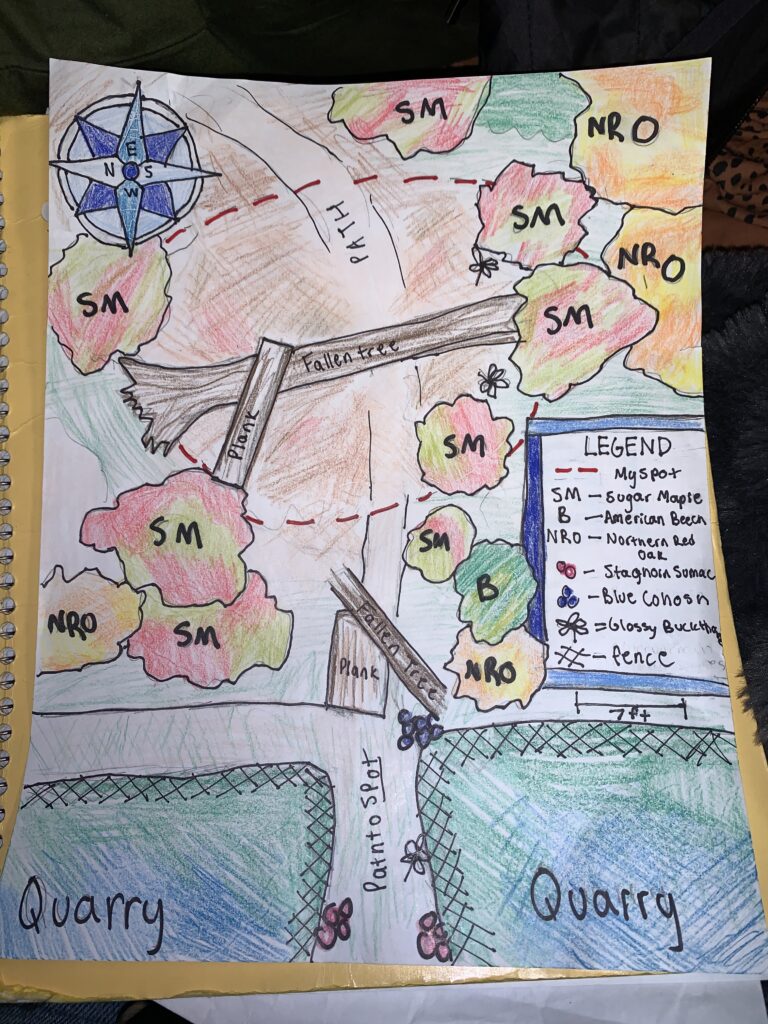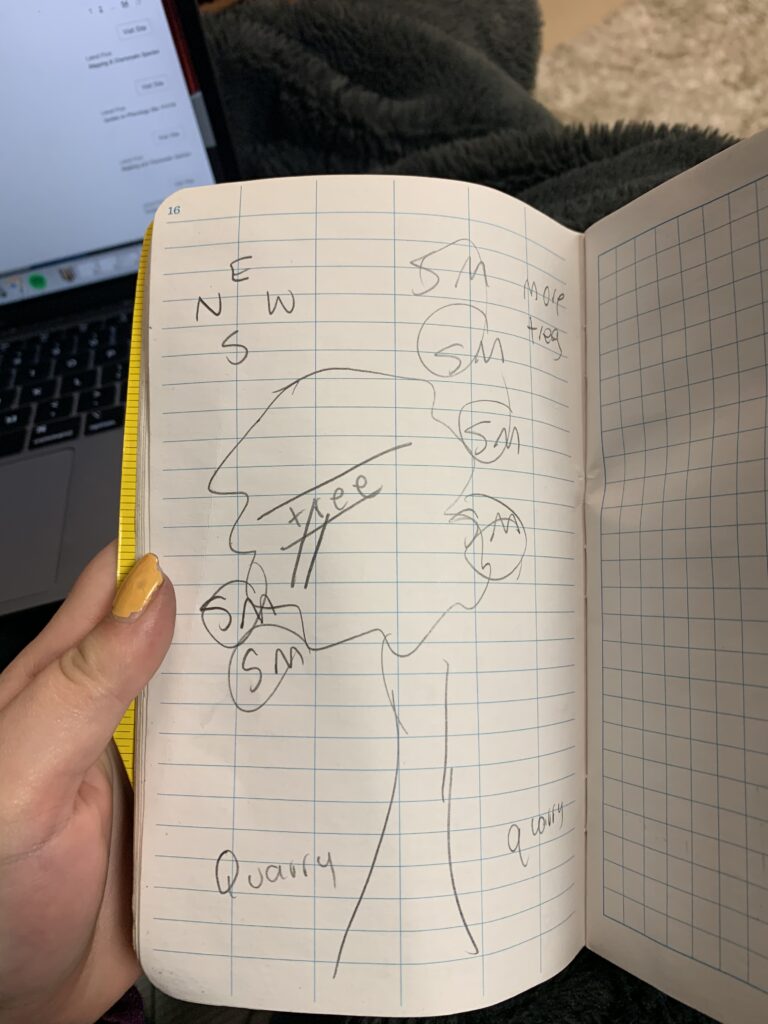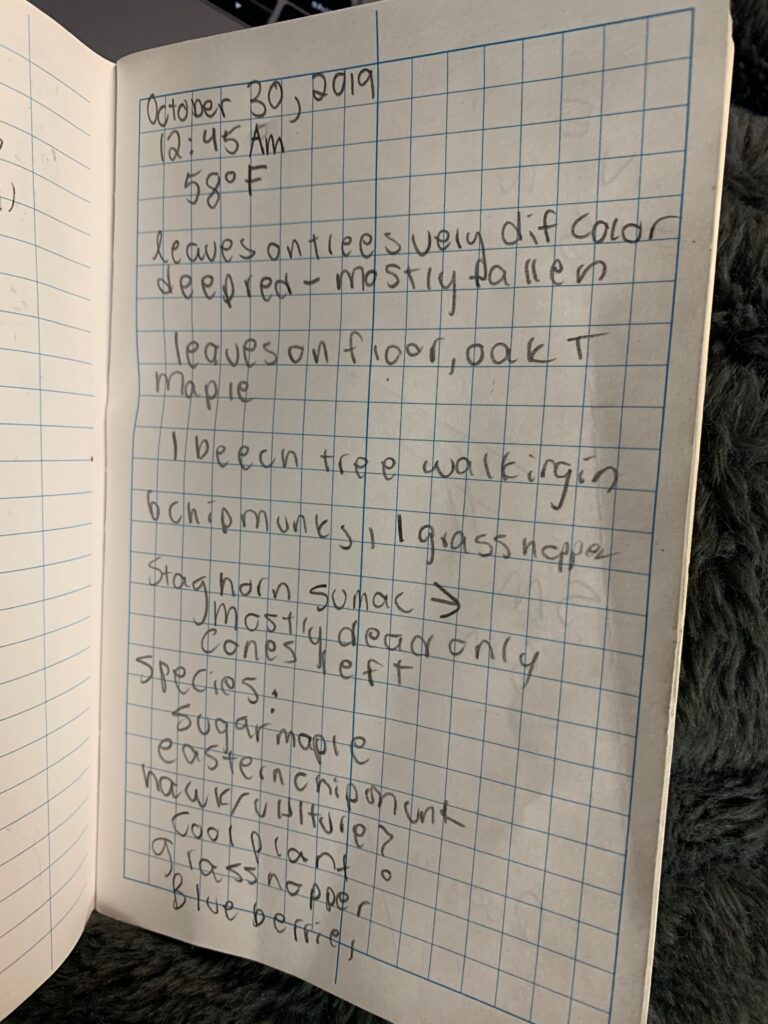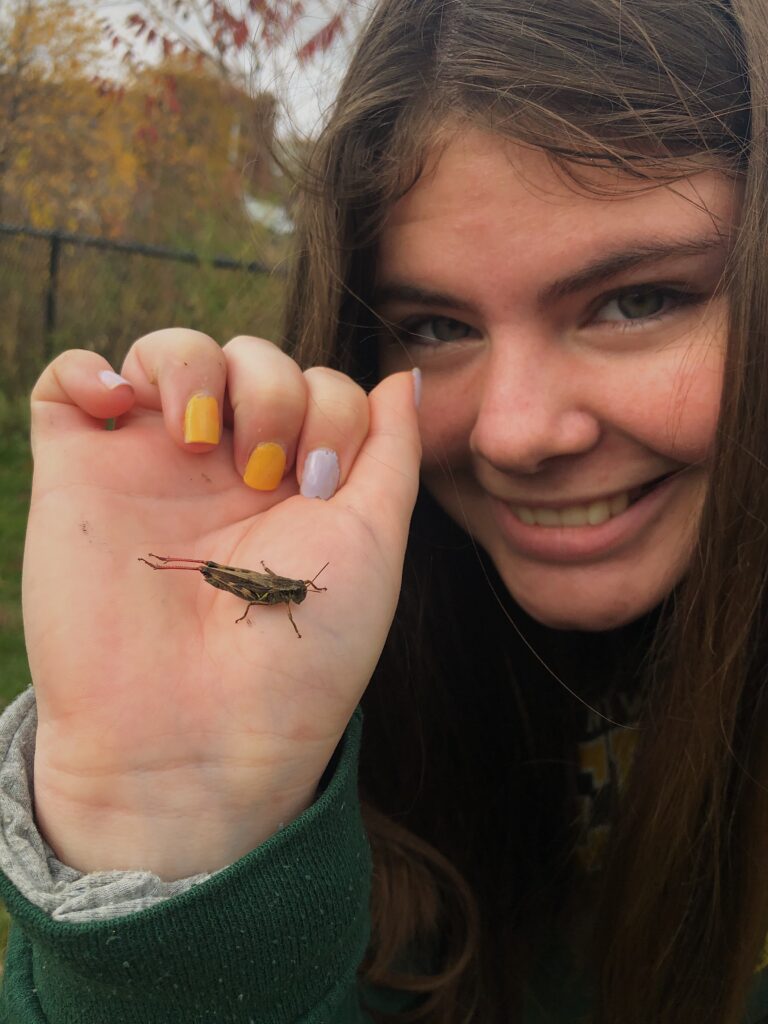
My Core Species.
While in my spot I chose 6 species to photograph: Blue Cohosh, Red Legged Grasshopper, Some unidentified bird of prey, a Sugar Maple, an Eastern chipmunk, and another unidentified plant species. At this point many plant species are starting to disappear in preparation for Vermonts cold winter. The tree species In my area are the stable plant species that will survive and stand all weekend, however the other smaller plants like Cohosh will not flourish for much longer. The chipmunks are ready to hibernate and the birds will migrate and come back in the spring. There was less to see than early October but I am predicting more than I will find next week. I identified the species as much as I could using inaturalist but could not identify everything.
Common name: Blue Cohosh, Scientific name: Caulophyllum thalictroides, Family: Berberidaceae, Rank: Species, Higher classification: Caulophyllum
Common Name: Red Legged Grasshopper, Scientific Name: Melanoplus femurrubrum, Order: Orthoptera Rank: Species, Higher classification: Spur-throated grasshoppers, Phylum: Arthropoda, Family: Acrididae
Common Name: Sugar Maple, Scientific name: Acer saccharum, Family: Sapindaceae, Rank: Species, Order: Sapindales Kingdom: Plantae
Common Name: Eastern Chipmunk, Scientific name: Tamias striatus, Lifespan: 3 years (In the wild), Order: Rodentia, Rank: Species, Higher classification: Chipmunk
Unidentified Bird, My Guess: Rough-Legged Hawk
Unidentified Plant, My Guess: no idea
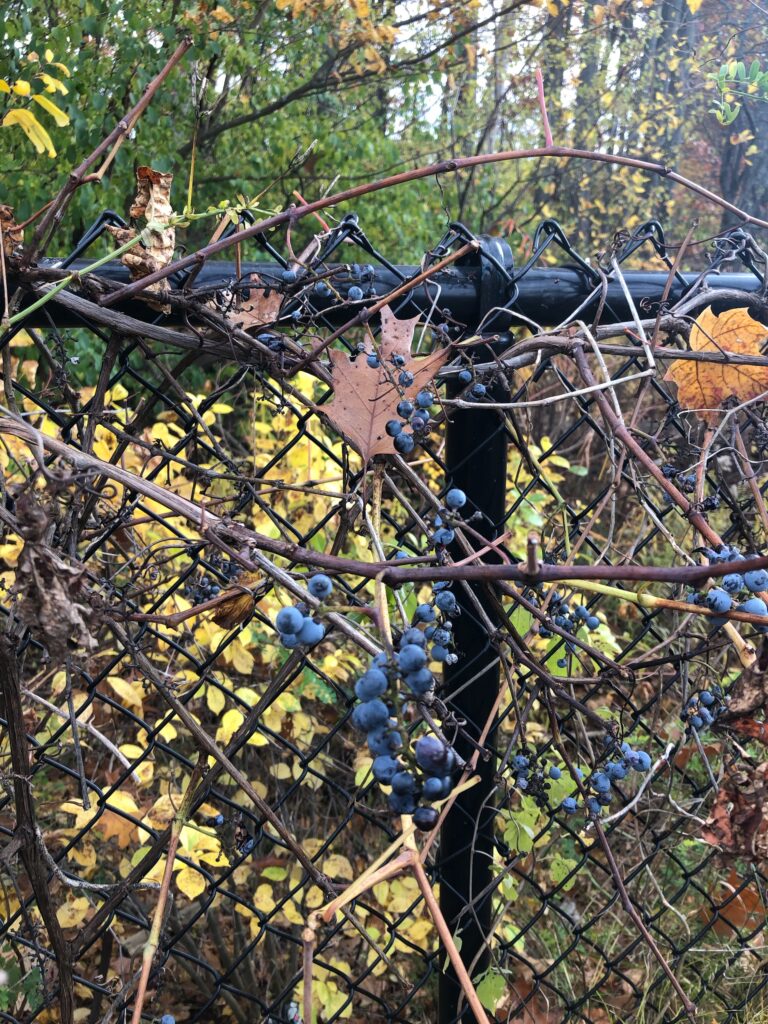
Blue Cohosh 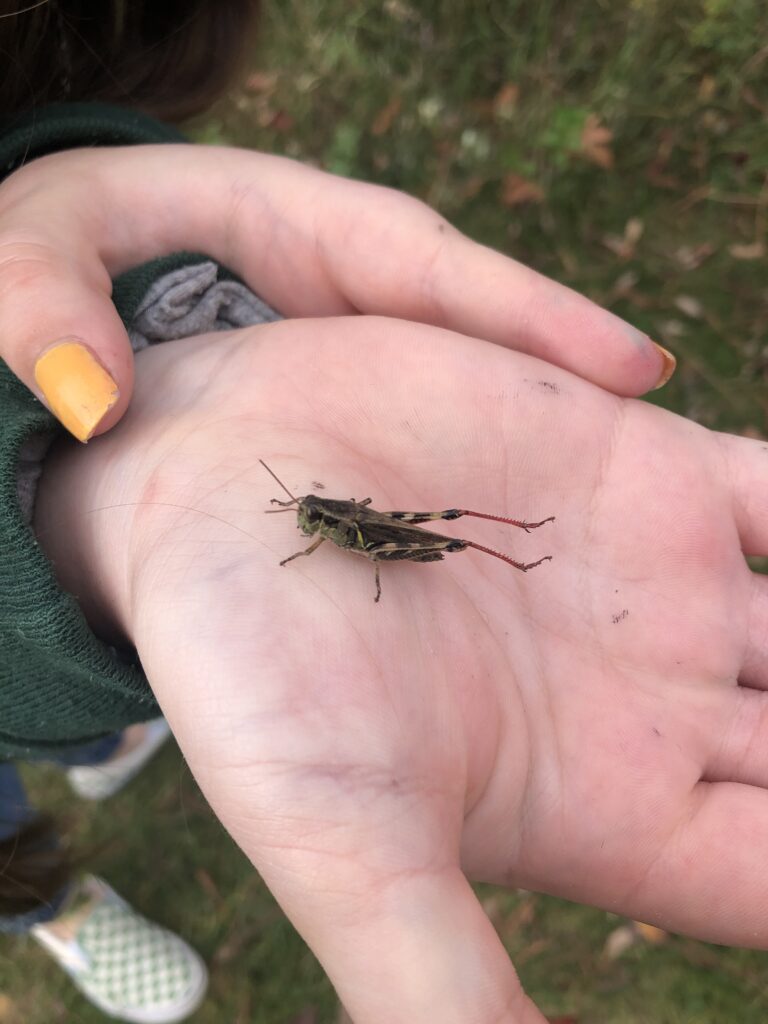
Red Legged Grasshopper? 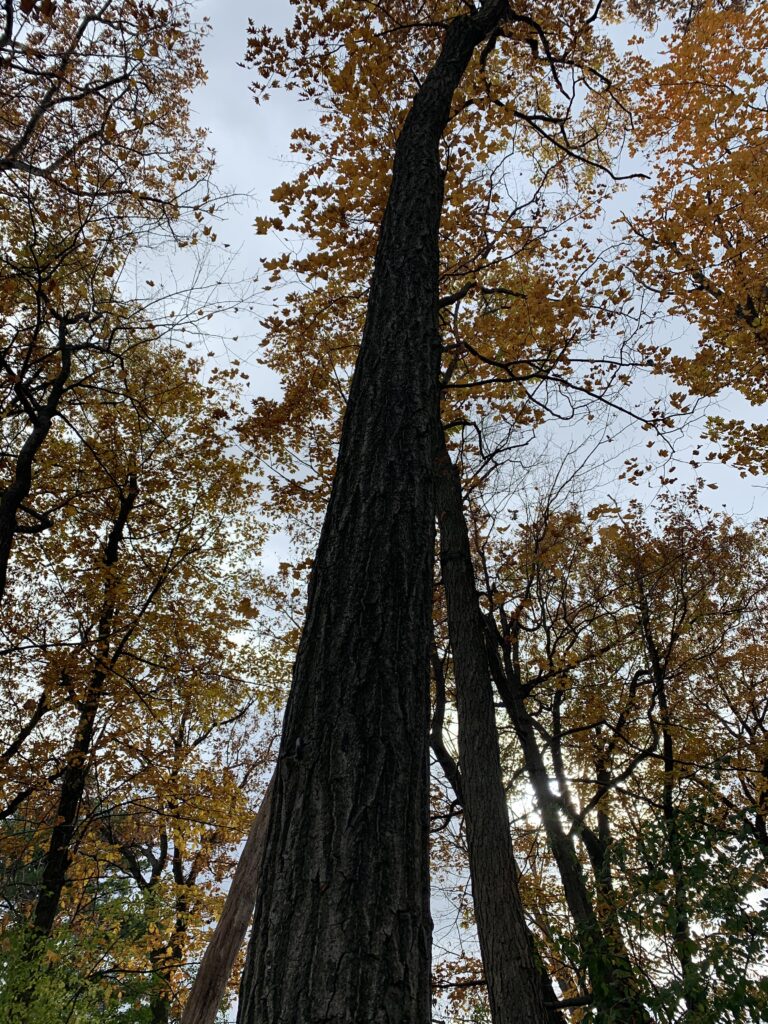
Sugar Maple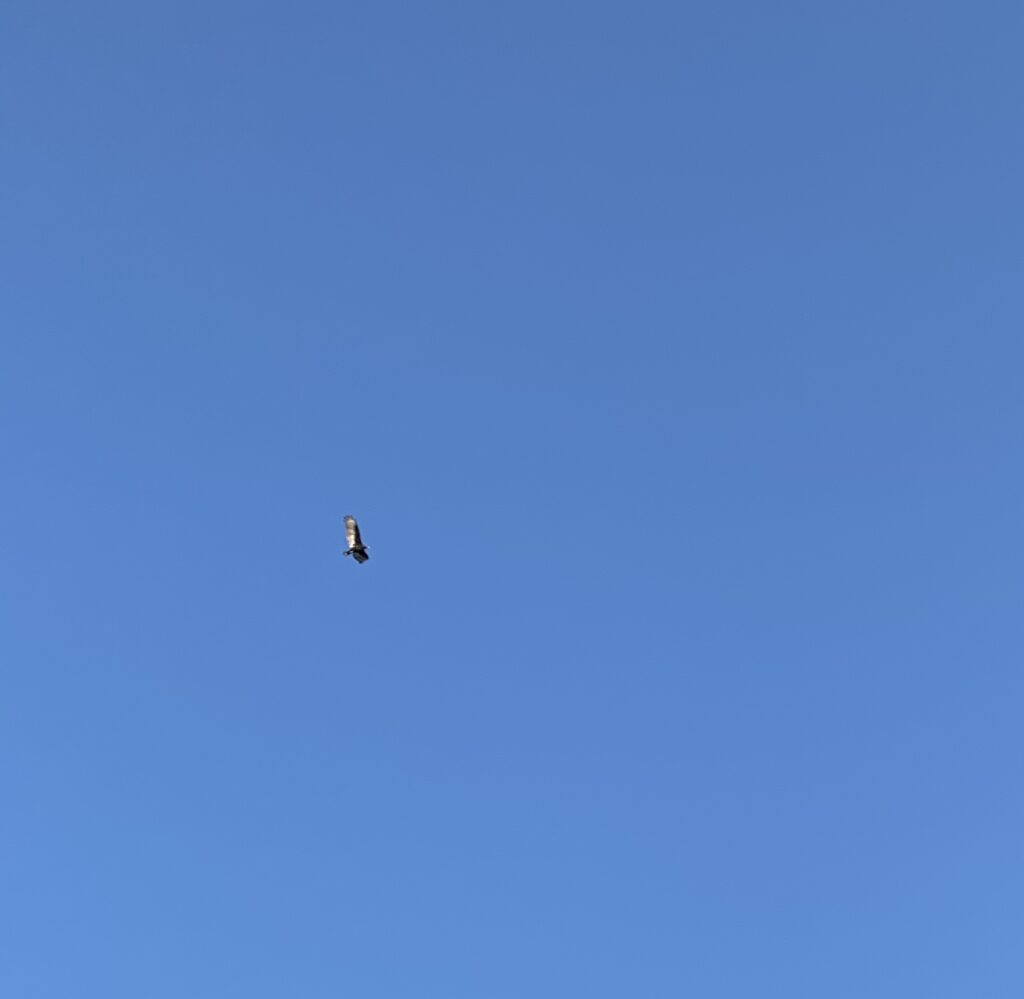
Unidentified Bird: rough-legged hawk? 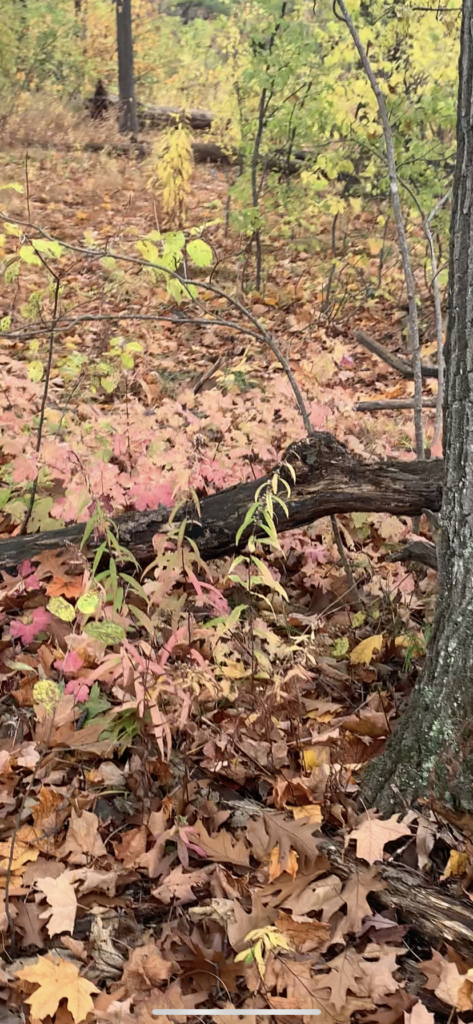
Unidentified Plant 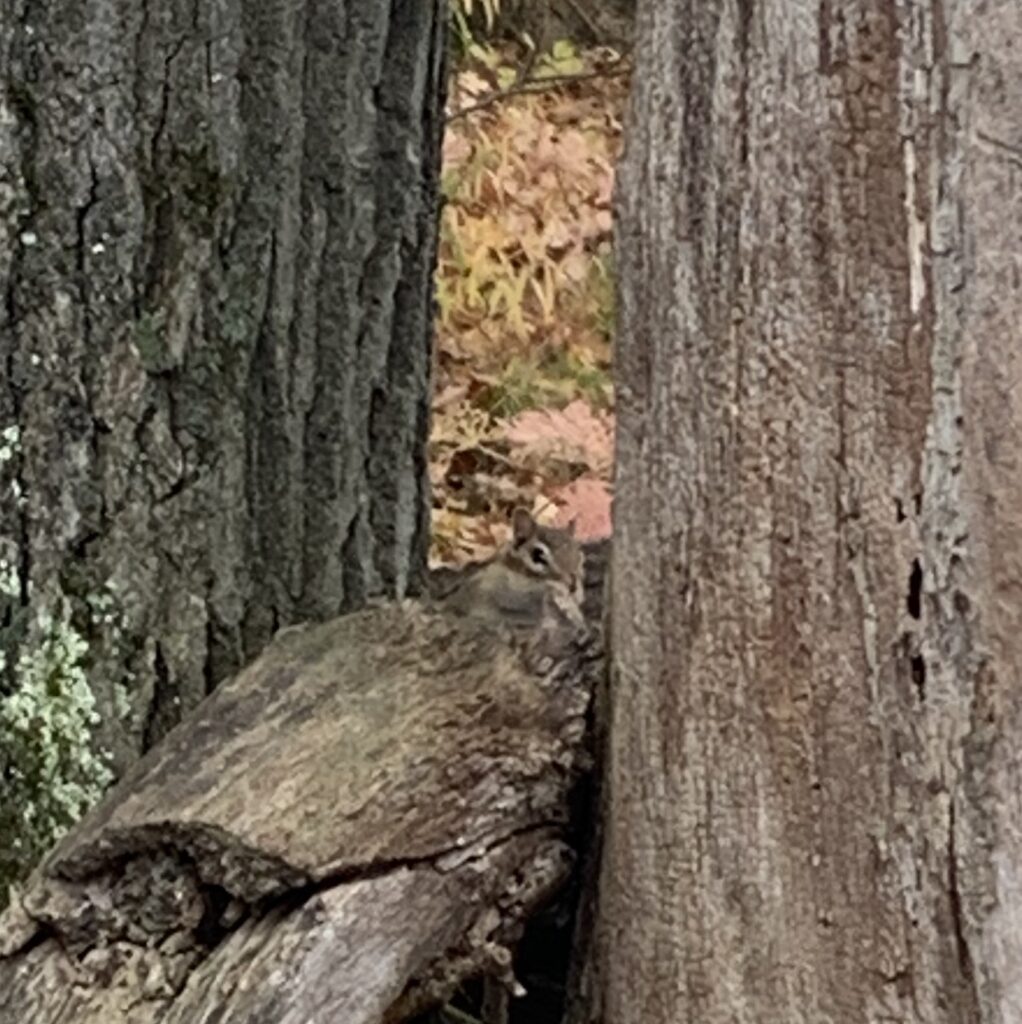
Eastern Chipmunk
Changes In My Spot
It is crazy how much has changed in just the two weeks since I last visited my sight. The trees are bare while the forest floor is covered in brown and orange leaves. The chatter of chipmunks, while still present seems more subdued than before. Sitting for the same amount of time, I saw less of them running about. Everything seems darker and less lively than before. I have included two photos below of the same cluster of trees and how different they look now. The leaves are quickly falling and covering the soil. I was unable to even see the dirt beneath me but the forest floor was hard. Since last week the trees have less leaves, the aster flowers I saw are gone, but most plants are still there.
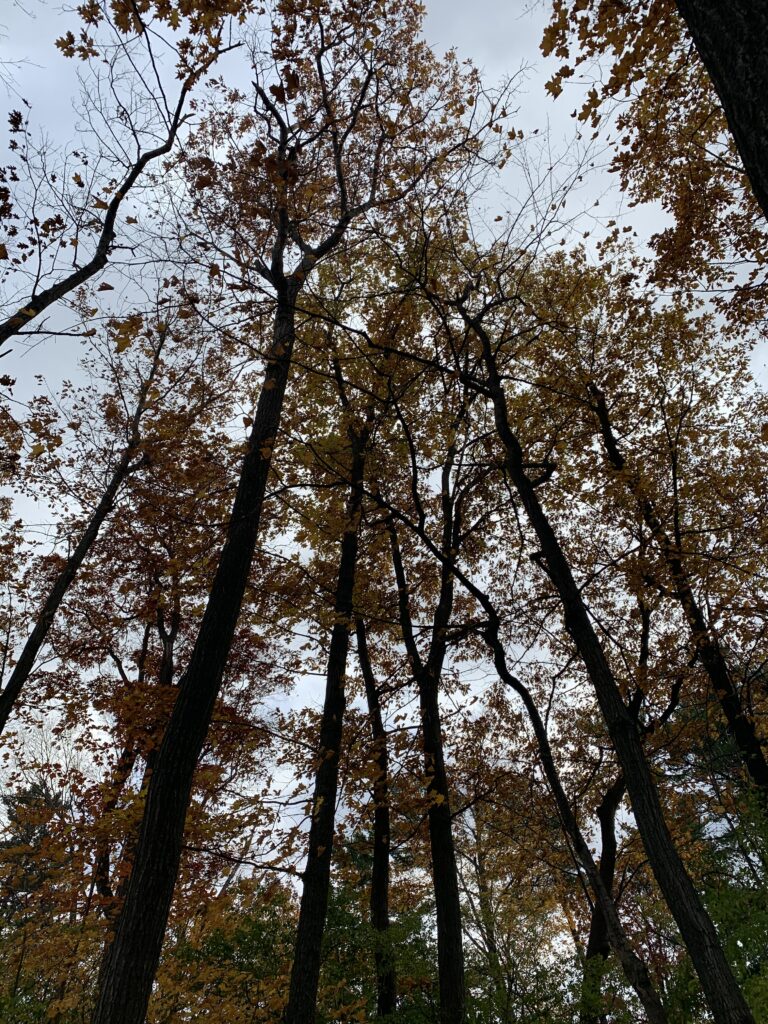
October 30 2019 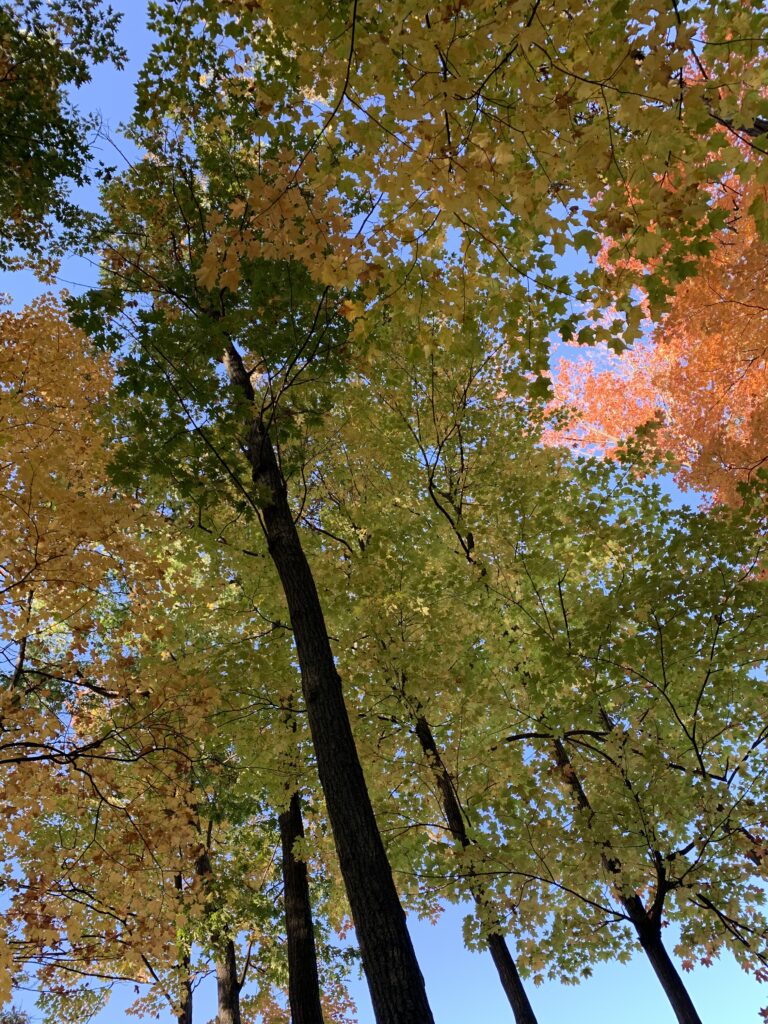
October 15 2019
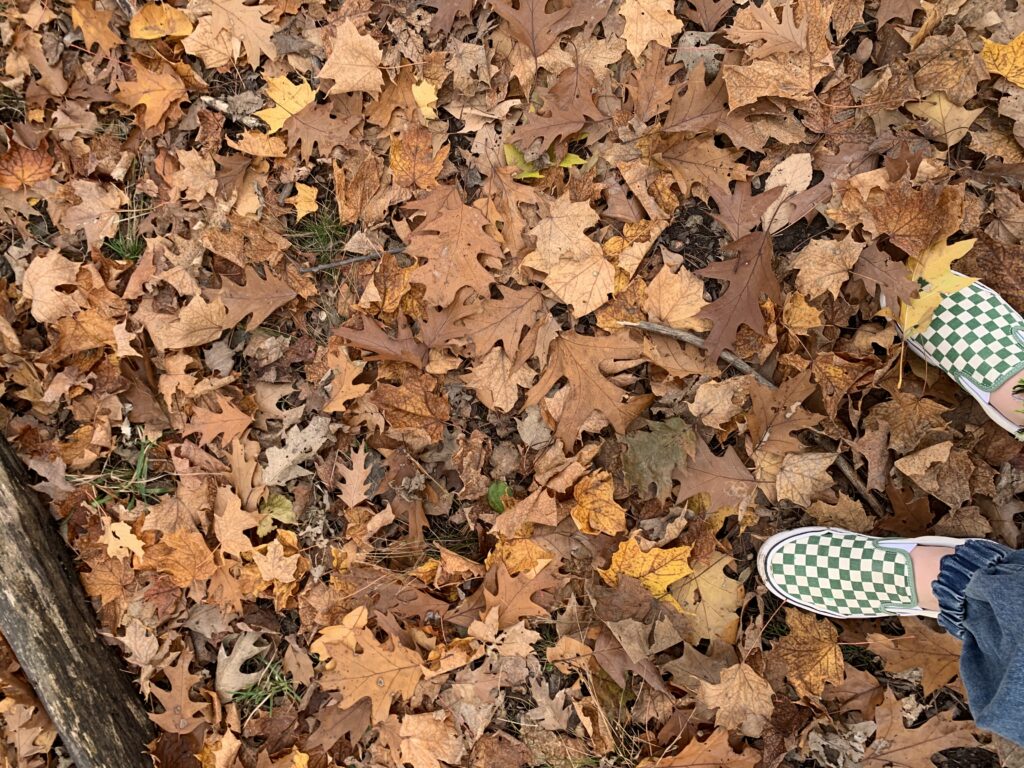
Mapping
This is the map I drew, I was able to easily identify the trees in my area but did not include all the trees in the area because there was too many and I couldn’t identify them all. The area I chose is right in the woods and is a big clearing. Making this map really helped me develop a better appreciation for my spot. As I drew it out and spent time amongst the plants identifying them, I started to find a real joy and excitement for doing it and had fun looking at my areas plants. It was harder than I thought it would be to try to include everything on the map. There are so many levels and layers of plants and within just a few feet is a mini ecosystem in itself. I wonder how much more I would see if I put some soil onto a microscope. There is a whole other microscopic world I did not even include in my map. Yet now, I feel more confident of my knowledge of the species in the area and want to show it off to my friends. I appreciate its complexity. Creating a map helped familiarize and appreciate all the areas of my spot.
